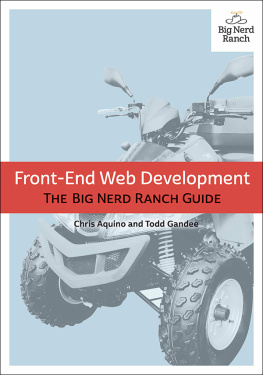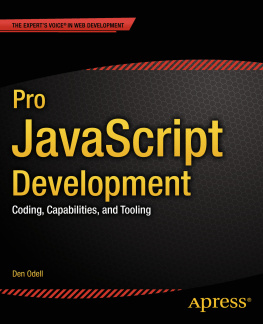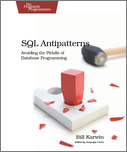Joe Fender - Front-End Fundamentals: A practical guide to front-end web development.
Here you can read online Joe Fender - Front-End Fundamentals: A practical guide to front-end web development. full text of the book (entire story) in english for free. Download pdf and epub, get meaning, cover and reviews about this ebook. year: 2015, genre: Home and family. Description of the work, (preface) as well as reviews are available. Best literature library LitArk.com created for fans of good reading and offers a wide selection of genres:
Romance novel
Science fiction
Adventure
Detective
Science
History
Home and family
Prose
Art
Politics
Computer
Non-fiction
Religion
Business
Children
Humor
Choose a favorite category and find really read worthwhile books. Enjoy immersion in the world of imagination, feel the emotions of the characters or learn something new for yourself, make an fascinating discovery.
- Book:Front-End Fundamentals: A practical guide to front-end web development.
- Author:
- Genre:
- Year:2015
- Rating:5 / 5
- Favourites:Add to favourites
- Your mark:
Front-End Fundamentals: A practical guide to front-end web development.: summary, description and annotation
We offer to read an annotation, description, summary or preface (depends on what the author of the book "Front-End Fundamentals: A practical guide to front-end web development." wrote himself). If you haven't found the necessary information about the book — write in the comments, we will try to find it.
This book came to be from the lessons we, the authors, have learnt through trial and error whilst working on front-end development projects ranging from enormous high-traffic sites such as MSNBC, The GRAMMYs and BravoTV to startups and experiments such as Drupalize.Me and BracketCloud We want to share with you the tools that we use and the standards that we follow. Our ultimate goal is for you to walk away understanding the core concepts of front-end development so you can confidently go and work on your own projects.
This book is somewhat opinionated based on our experience, so youll find some of the content heavily geared towards a particular way of doing things. Of course, there are many ways of accomplishing the same task in the world of front-end development; thats what makes it so accessible and yet so complicated. Learning one way of doing something can make learning the alternatives a much more palatable task, so we encourage you to look into any and all of the technologies presented herein and even go on to see if something else might better fit your needs.
Who is this book for?
The content in this book is aimed at those who are new to front-end web development. Regardless of whether you are a beginner or expert developer, the concepts outlined in this book are essential to embracing the rapidly evolving web.
If you hear yourself asking any of the following questions, this book will likely be very useful for you!
* What actually is front-end development?
* How can I be a more efficient web developer?
* What is Grunt/AngularJS/SASS/?
* How do I fit all of these front-end tools together into a project?
* How can I build a front-end application that can scale?
What does this book cover?
Basics
Youll learn whats expected from a front-end developer and get a short overview of the types of projects a front-end developer might be tasked with. Well even take you through setting up your computer for local development.
Frameworks
Well introduce some of the more popular JavaScript frameworks and template languages in use today. Well cover the details of what exactly a framework is and talk about the MVC pattern before getting into the details of installation and practical usage of 3 popular frameworks: AngularJS, Backbone.js and Ember.js.
Styling
Theres a lot more to styling than just throwing CSS at your markup; that just leads to a big mess of unreadable spaghetti code sprinkled with `!important` parmesan. Well cover CSS preprocessors like Sass, organizational methods for your styles, and the kind of impact your CSS may have on a projects performance.
Dependency Management
Getting your whole team on the same page code-wise can be challenging. Heck, even making sure youre using the same version of that awesome Ruby gem after an update can be a pain. This chapter on dependency management covers a number of really handy front-end package managers like `npm`, `Bower`, and `Bundler`. Youll learn what a package manager is and how to use it effectively to keep your project on track.
Automation
Well go over how you can remove the tedium from front-end development and just get to work. Youll learn how to perform tasks like checking your JavaScript or CSS for errors whenever you save a file, minify your code to shave off some file size, and even how to automatically refresh your browser whenever something changes. Once you get started, youll never look back.
Joe Fender: author's other books
Who wrote Front-End Fundamentals: A practical guide to front-end web development.? Find out the surname, the name of the author of the book and a list of all author's works by series.

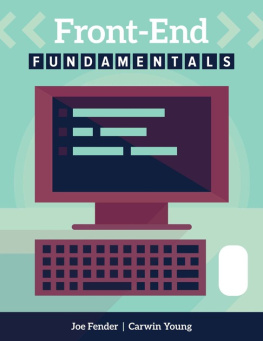


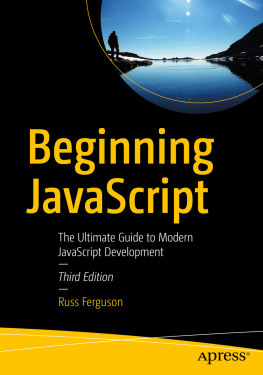

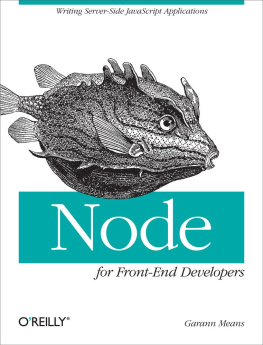
![Stefan Baumgartner [Stefan Baumgartner] - Front-End Tooling with Gulp, Bower, and Yeoman](/uploads/posts/book/120519/thumbs/stefan-baumgartner-stefan-baumgartner-front-end.jpg)
![Luca Mezzalira [Luca Mezzalira] - Front-End Reactive Architectures: Explore the Future of the Front-End using Reactive JavaScript Frameworks and Libraries](/uploads/posts/book/120508/thumbs/luca-mezzalira-luca-mezzalira-front-end.jpg)
